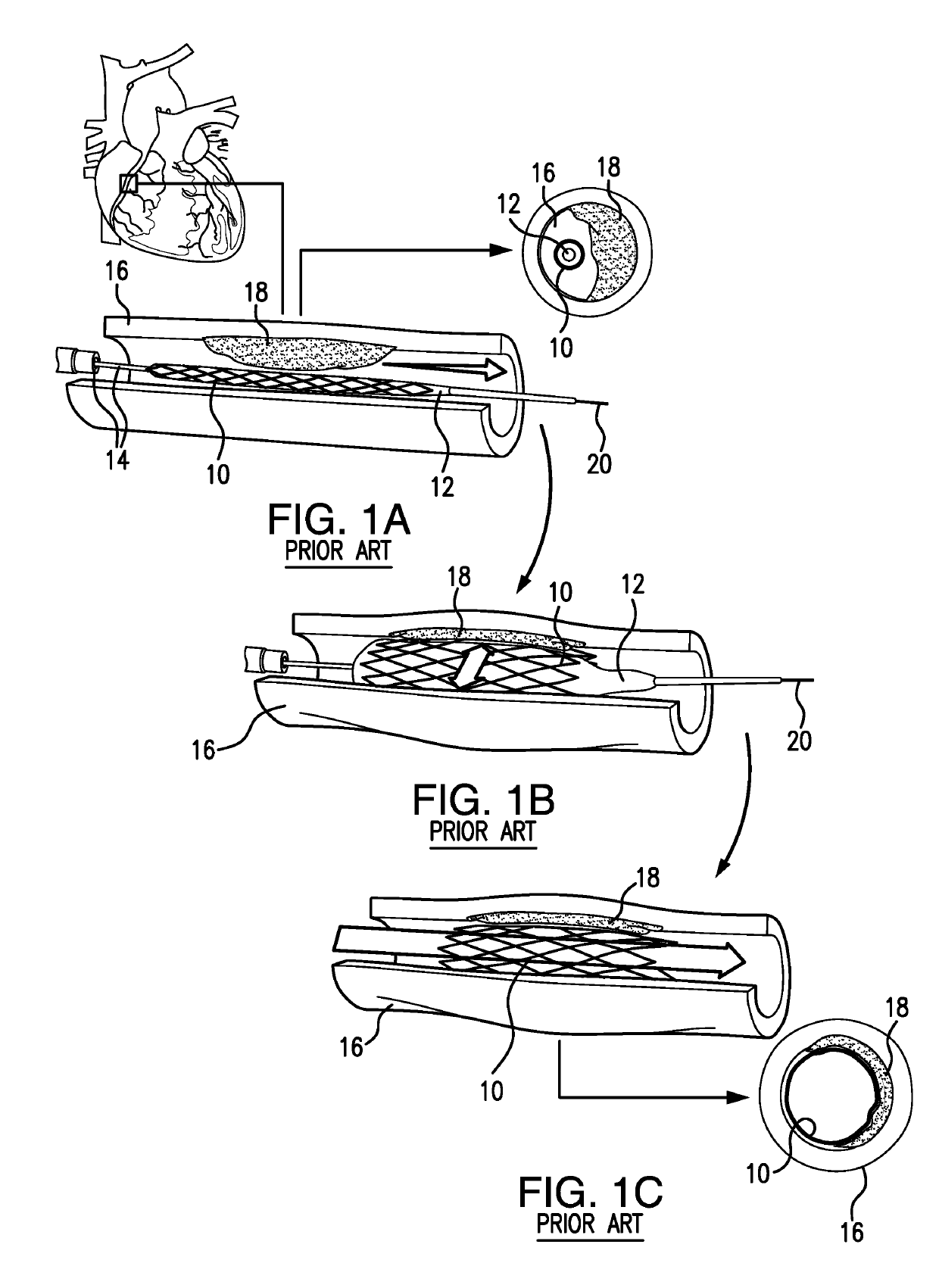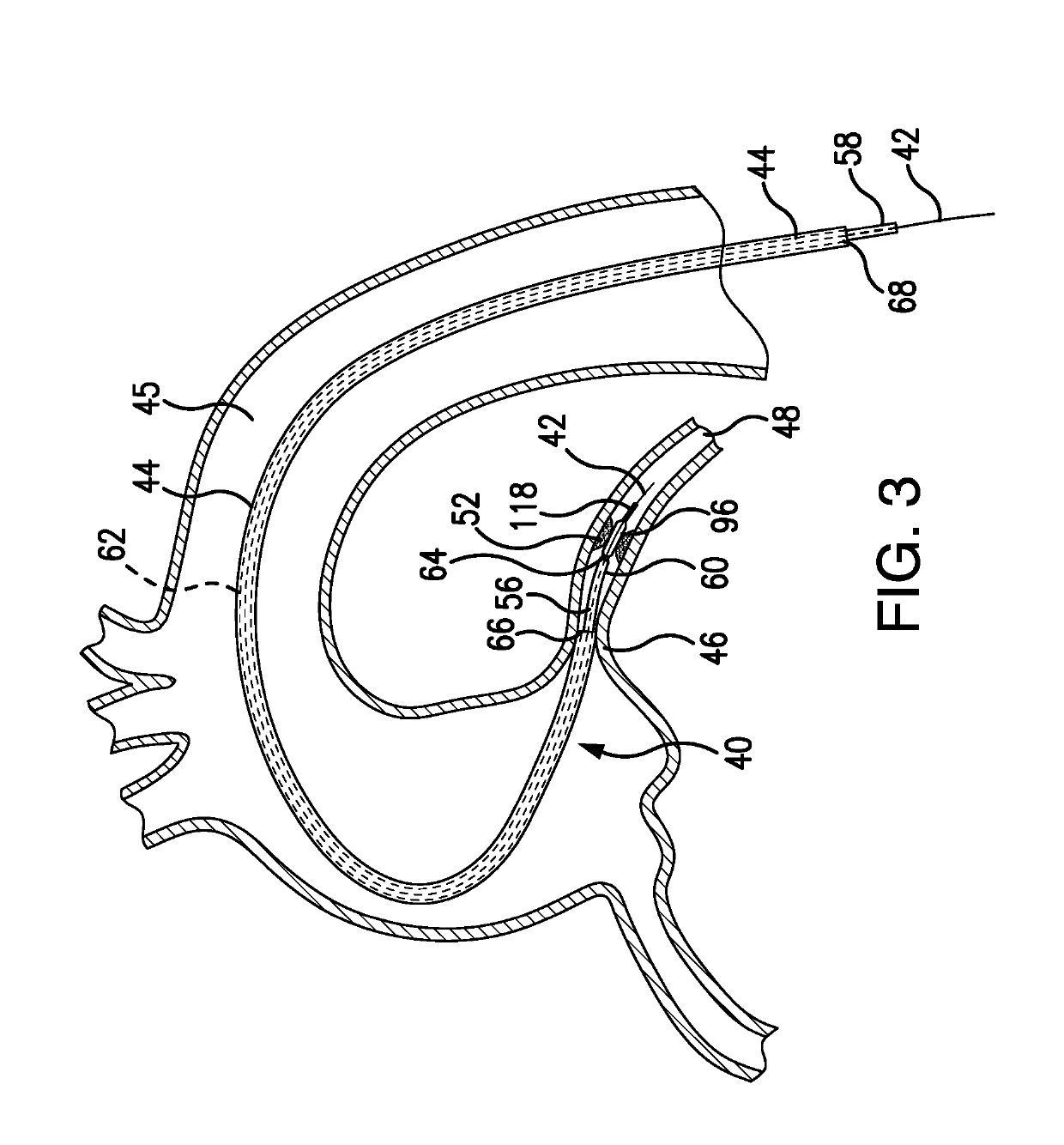Intravascular delivery system and method for percutaneous coronary intervention
a delivery system and intravascular technology, applied in the field of medical devices, can solve the problems of compromising affecting the smooth advancement of the revascularization device, and reducing the flexibility of the balloon, so as to achieve the effect of minimal trauma and efficient delivery
- Summary
- Abstract
- Description
- Claims
- Application Information
AI Technical Summary
Benefits of technology
Problems solved by technology
Method used
Image
Examples
Embodiment Construction
[0122]Depicted in FIGS. 3-23F, is the subject intravascular delivery system 40 and method for percutaneous coronary intervention. The subject system 40 includes a guide catheter extension sub-system (outer member) and an interventional device delivery sub-system (inner member) cooperating under control of a surgeon during a cardiac procedure. Although the interventional device delivery sub-system may be used for delivery of various cardiac interventional devices, in one of implementations, as an example only, but not to limit the scope of the subject invention to this particular embodiment, the subject interventional device delivery sub-system will be further described as adapted for delivery of a balloon member for performing the pre-dilatation procedure.
[0123]Therefore, in the exemplary embodiment described herein, the subject system 40 is referred to herein as a guide catheter extension / pre-dilatation system which is used for cardiac procedures in conjunction with a guide wire 42...
PUM
 Login to View More
Login to View More Abstract
Description
Claims
Application Information
 Login to View More
Login to View More - R&D
- Intellectual Property
- Life Sciences
- Materials
- Tech Scout
- Unparalleled Data Quality
- Higher Quality Content
- 60% Fewer Hallucinations
Browse by: Latest US Patents, China's latest patents, Technical Efficacy Thesaurus, Application Domain, Technology Topic, Popular Technical Reports.
© 2025 PatSnap. All rights reserved.Legal|Privacy policy|Modern Slavery Act Transparency Statement|Sitemap|About US| Contact US: help@patsnap.com



